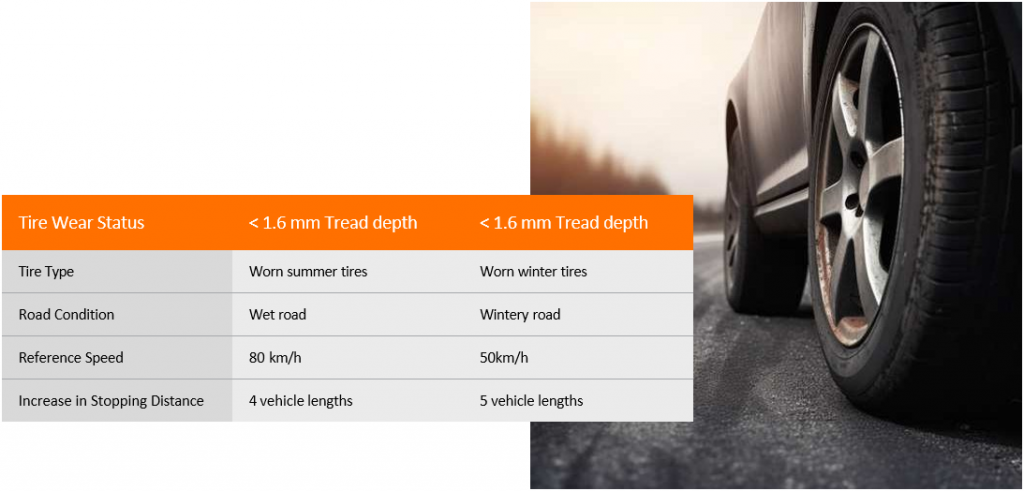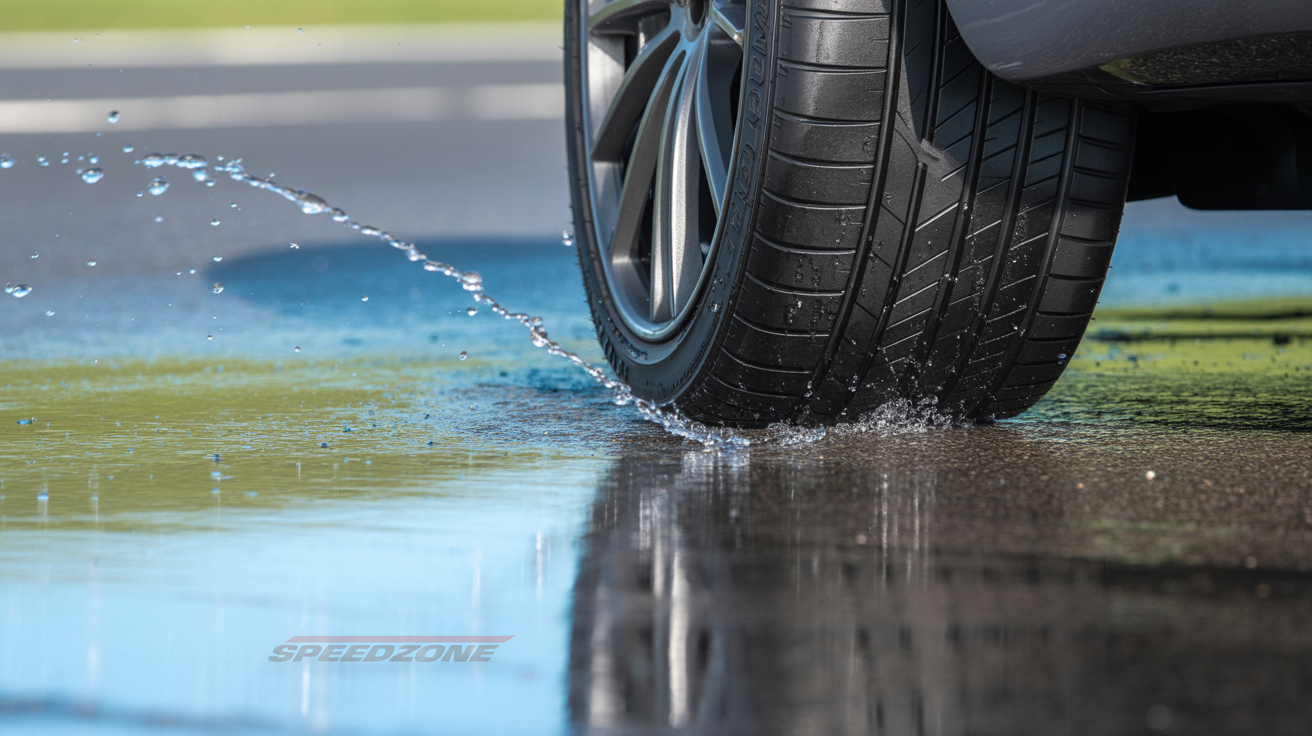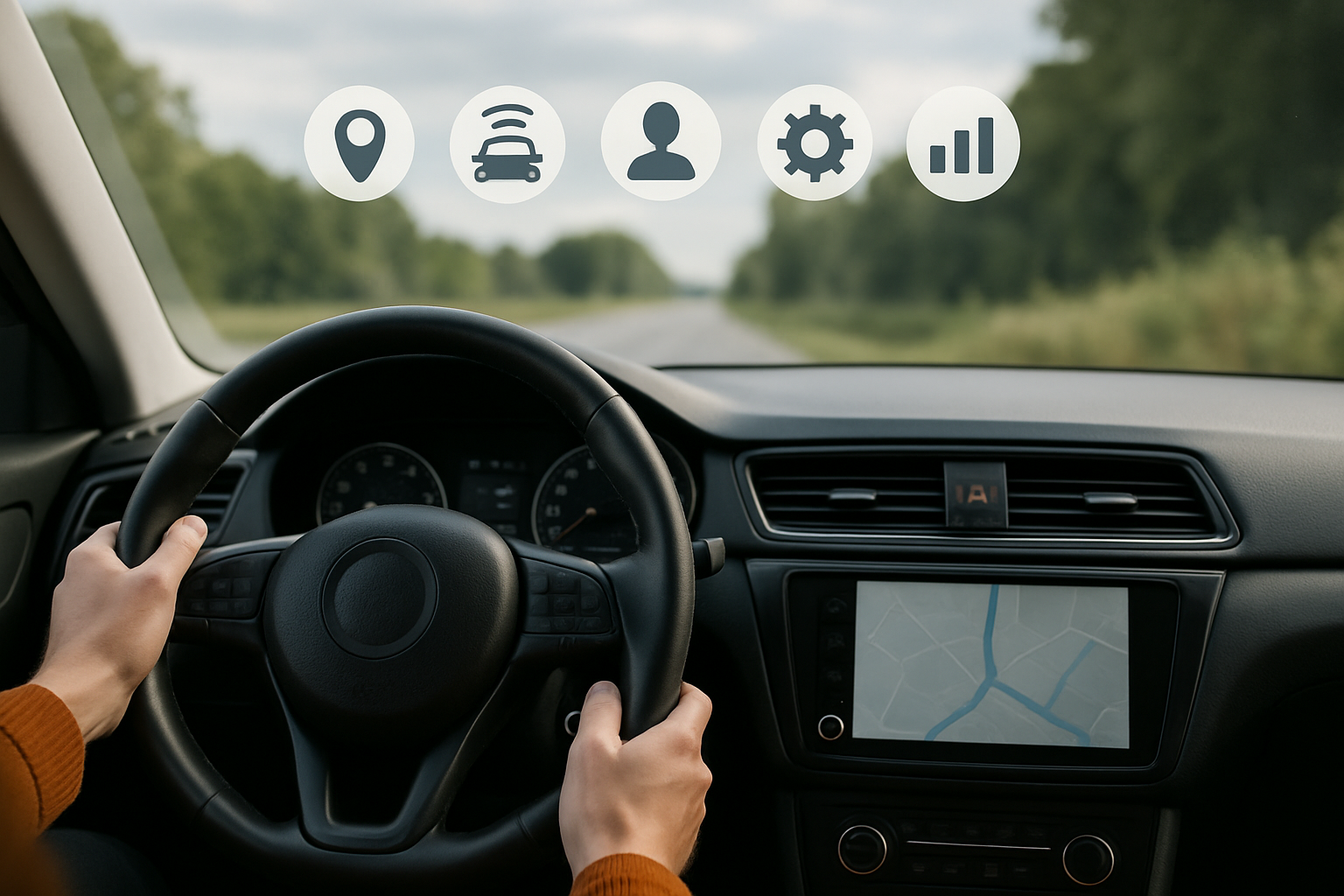Cutting-edge tire health monitoring technology is poised to revolutionize the driving experience.
Not only does it promise to elevate driver satisfaction, but it also stands to cut costs, enhance safety, reduce environmental impact, and maintain driver engagement through real-time information. This innovation opens up new avenues for Original Equipment Manufacturers (OEMs) and tire manufacturers to connect with customers post-purchase, fostering interaction, and providing crucial insights into tire health.
The Significance of Continuous Tire Monitoring
Tires play a crucial role in ensuring road safety. Despite the alarming number of tire-related accidents, injuries, and fatalities, the initiatives taken by various stakeholders, such as Tire Pressure Management Systems (TPMS), fall short in delivering real-time data for enhanced efficiency, safety, and mechanical health.
Hardware-based tire monitoring solutions prove to be excessively costly. Additionally, drivers often neglect visual inspections and timely replacements. What is imperative is a software-based, continuous tire monitoring solution that offers timely notifications regarding tire health. This kind of solution not only bridges the gap between Original Equipment Manufacturers (OEMs) and customers but also contributes to an improved and safer driving experience.
Tens of Thousands of Tire-Related Crashes Annually
Every year, there are an estimated 11,000 tire-related crashes in the US according to the National Highway Traffic Safety Administration (NHTSA).
In addition, dangerous driving conditions from winter weather and driving on worn tires are two of the most common causes of vehicle collisions. The number of tire-related deaths every year tells a somber story. In 2021, a total of 622 people died on the road in tire-related crashes, according to the NHTSA, while 44.9% of adult drivers have experienced a tire blowout, according to a study conducted by United Tires. The causes for tire blowouts are broad and varied, ranging from failure to use tire pressure monitoring systems, underinflation, overload, damage, manufacturing defects, wear, and age.
Why Tire Age Matters
Tire health deteriorates with age. For the average driver, tires normally wear out between three to four years. However, tire manufacturers generally recommend that tires should be replaced after six to ten years. Determining tire age isn’t possible unless the tire data code is recorded.
Over-age tires lead to a large number of safety risks, including tread separations, tire cracks, tire blowouts, reduction in traction, less responsiveness, more heat buildup, and more prone to punctures and cuts.
Leading Tire-Related Safety Risks
Worn, mismatched, and underinflated tires carry a large number of risks, including:
Reduced traction
Diminished tread, mismatched and under or overinflated tires result in tires losing their ability to grip the road effectively, leading to reduced traction on wet, snowy, or icy surfaces which increases the risk of skidding or hydroplaning.
Longer stopping distances
Worn-out tires require a longer distance to stop, which can be especially dangerous in emergency situations.
Increased risk of hydroplaning
Tires with shallow or worn-out tread grooves are more likely to hydroplane on wet roads. Hydroplaning occurs when a layer of water separates the tires from the road surface, resulting in the loss of vehicle control.
Decreased handling and stability
Worn-out tires may result in reduced responsiveness and handling capabilities. Vehicles may feel less stable in corners and during evasive maneuvers.
Increased risk of blowouts
Excessive wear can weaken a tire structure and expose the steel belts, which makes the tire more susceptible to blowouts. Blowouts occur suddenly and lead to a loss of vehicle control.
Unpredictable performance
The performance of worn-out tires can become unpredictable, making it more challenging to maintain control of vehicles in various weather and driving conditions. Blowouts occur suddenly and lead to a loss of vehicle control.
How Worn Tires Affect Braking Distance
As tire wear increases and weather conditions change, longer vehicle length is needed when braking. The braking distance of a vehicle depends on its type, its age, the brakes, and the tires used, as well as the road surface, highlighted by Continental AG.
Reduced winter performance
Worn tires are less effective in winter conditions. In snowy or icy conditions, the lack of tread depth can make it difficult to create traction.
Handling and stability
Incorrect tire pressure can affect a vehicle’s handling and stability. Underinflated tires may lead to steering problems, decreased responsiveness, and a tendency to sway during turns, while overinflated tires can make the ride feel harsh (increased vibrations) and negatively impact stability.
Rollover risk
Overinflated tires can decrease the tire’s ability to absorb road irregularities, leading to a harsher ride and potentially increasing the risk of losing control, especially in vehicles with a high center of gravity like SUVs.
Reduced comfort
Worn tires can create vibrations and noise, which can be uncomfortable for passengers and lead to driver fatigue.
Increased risk of flat tires
As the tread reduces due to wear, the risk of tire punctures and road debris damage increases.

Counting the Cost of Poor Tire Maintenance
The consequences of neglecting tire health can be dramatic, resulting in loss of life and vehicle total loss (write-offs).
At the minimum, failing to maintain tires results in uneven wear, reducing lifespan, and necessitating more frequent replacements. Improperly inflated or misaligned tires increase rolling resistance, causing the vehicle’s engine to work harder and therefore consume more fuel, leading to higher fuel costs.
Neglecting tire maintenance results in tires being more likely to suffer from damage, irregular wear, or other issues that require premature tire replacement or involve costly repairs, and can also place additional stress on the vehicle’s suspension and alignment. When tires pass the legal limit for tire wear and are not replaced, it can lead to heavy fines.
The table below demonstrates the cost of removing a tire due to unnecessary tread loss, taking into account varying losses (5%-25%) due to poor maintenance.
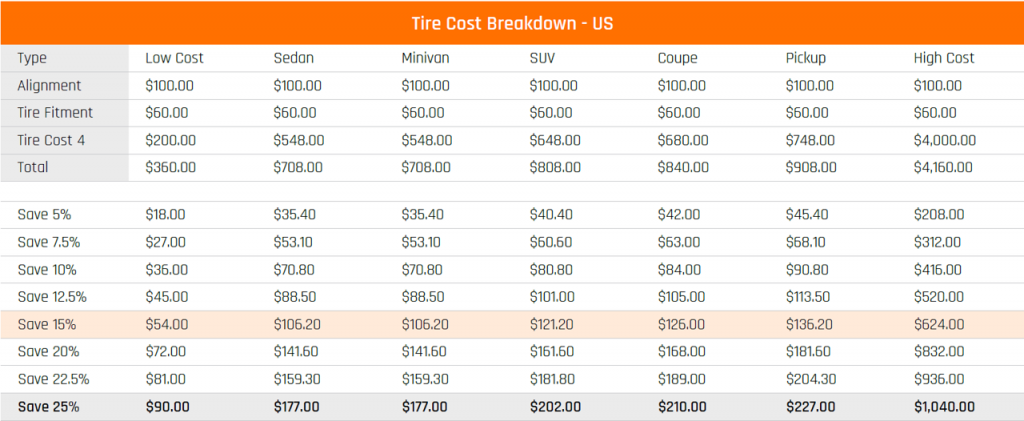
Tire Health Also Affects Driver’s Comfort
Poorly maintained, inflated, and balanced tires can lead to a plethora of problems that may significantly affect driver comfort and driving experience.
Vibration & NoiseShaking in the steering wheel and the entire vehicle and more road noise which leads to higher cabin noise. |
Uneven WearIrregular tire wear, stemming from inadequate maintenance practices such as improper inflation or misalignment, leads to a bumpy and uneven ride. |
Reduced handling & stabilityResulting in decreased road grip, especially when taking corners, on uneven road surfaces, and driving at higher speeds. |
EVs Experience Extra Tire Wear
The heavier battery weight, instant torque, and regenerative braking of EVs put more stress on tires, leading to increased wear. Because they have longer maintenance cycles, EV owners have fewer interactions with service centers or dealerships. Neglecting basic items like tire rotations, tire wear inspections, pressure checks, etc. can lead to safety and performance issues.
Drawbacks of Current Tire Monitoring Solutions
Treadwear, tire type, and tire stiffness are not currently being monitored while driving and require offline inspection/evaluation. Even in today’s most advanced vehicles, air pressure and temperature are the only measures of tire safety that are monitored automatically and provided to drivers. Measuring tire tread depth and grip is stll considered technologically challenging and not cost-effective.
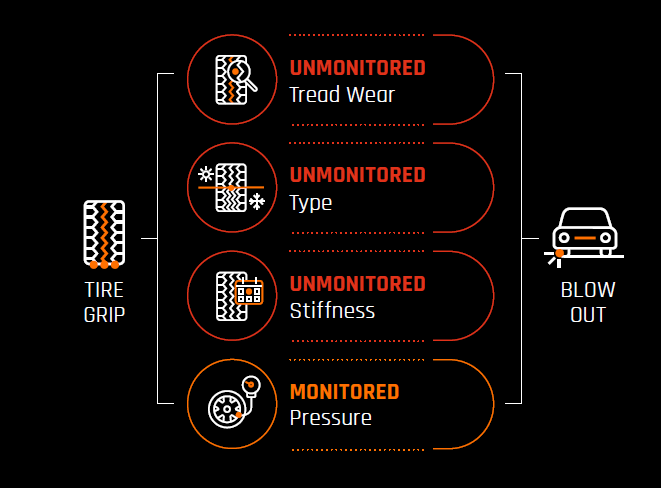
Drawbacks of Hardware-based Smart Tires
Smart tires are more expensive than traditional tires due to the embedded sensors and technology, presenting a significant barrier for some consumers. Smart tire technology is relatively new, and like any emerging technology, it is known to have reliability issues. Sensors often have setup issues and fail, or the data they provide is not always accurate, which can lead to false alarms.
Smart tire technology is not compatible with all vehicles. Retrofitting older vehicles with smart tires might not be feasible or cost-effective. As an example, different TPMS systems use different protocols and frequencies, making it difficult to replace sensors or integrate them with aftermarket wheels or tires.
Tactile Mobility: Reimagining Tire Health through Live Monitoring
Monitoring the tire maintenance aspect of a vehicle electronically “live” allows for proactive actions to be taken that allow for optimized tire utilization and safety. Tactile Mobility’s data-driven insights about uneven tire wear per model and geography contribute to earlier identification of problems and optimized configurations for more effective vehicle tire selection.
Tire Wear Patterns Tell a Story
Tired wear patterns indicate the unnoticed maintenance problems that need to be addressed. The tread pattern of a tire makes contact with the road surface and by design consists of several blocks/ribs that are separated by circumferential grooves and lateral grooves or by circumferential sipes or lateral sipes.
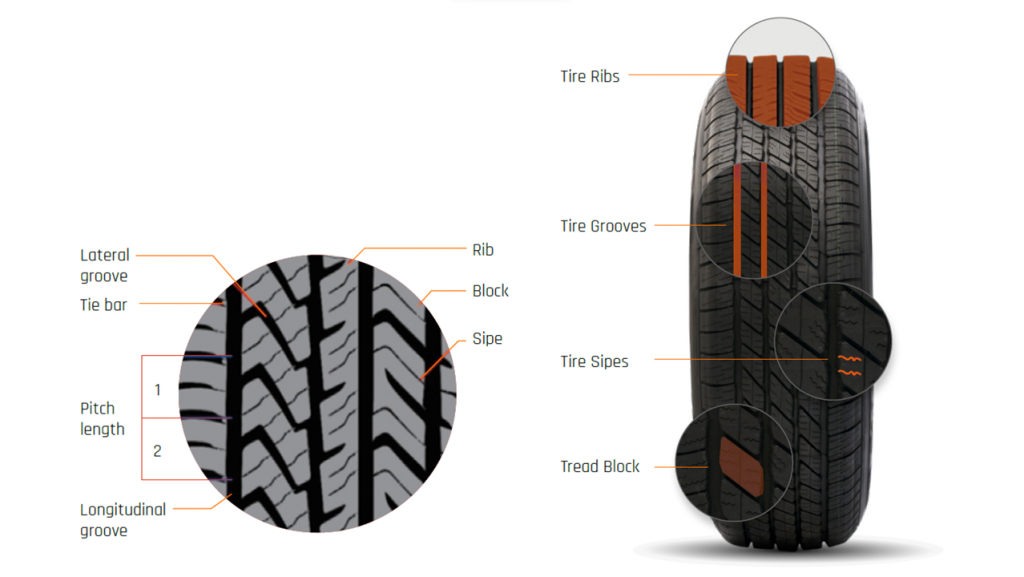
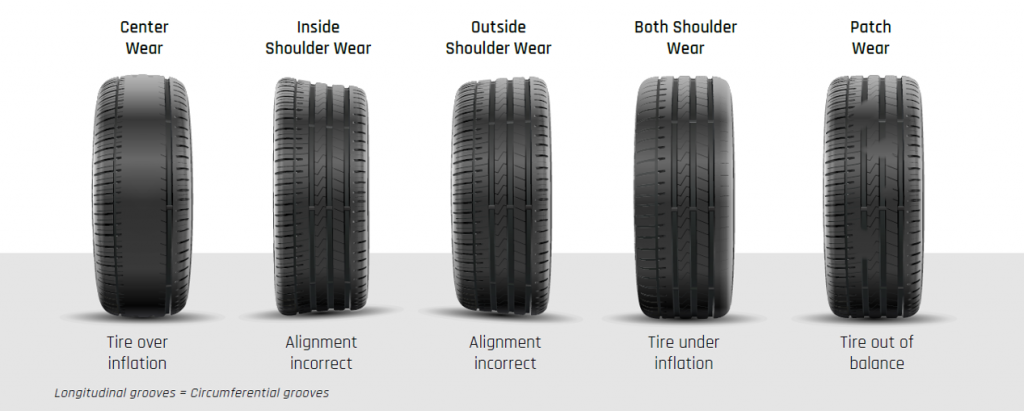
As previously noted, tread depth is crucial in vehicle safety – increasing vehicles’ ability to grip the road, brake efficiently on wet surfaces, avoid aquaplaning, and ensure driver and passenger safety. Tactile Mobility’s virtual sensors not only estimate tire tread depth in real-time but also alerts drivers before their tires become unsafe, so they can be replaced in a timely fashion.
Alerts can be provided on an in-vehicle or fleet level. In-vehicle alerts include mismatch alerts, tire tread depth indications, tire rotation recommendations, and tire aquaplaning resistance. On a fleet level, cloud insights include tire rotation recommendations, expedited tire wear for tire models, bad tire grip on wet asphalt, as well as wear under different driving styles, weather, and pavement conditions.

The benefits of ongoing tire monitoring are clear:
Early detection provided by online monitoring of tire health and efficiency identifies and prevents risks, raises efficiency and lowers emissions through lower fuel consumption, and results in lower risks, payouts, and injuries.
It also provides long-term wear and tear insights and continuously updated and objective data on tire wear behavior over time. When the performance of the tires is monitored, recorded, and analyzed, actions can be planned proactively to reduce costs.
Identifying irregular tire wear early results in potential savings from 5% to 25% of cost. However, if tire wear isn’t caught early on and 25% of tire potential is lost, car owners will end up changing tires more often. Monitoring the tires allows for cost optimization, reduced safety risk, environmental impact reduction, product research carried out on a massive data pool, and more.
For drivers, tire wear monitoring enables proactive management and planned maintenance which leads to an enhanced driving experience. Additionally, it has the potential to reduce tire operation costs, identify and reduce safety risks, and reduce or minimize financial loss both to drivers and insurers. It also enables the forging of long-term customer relationships.
Tire Monitoring Can Play a Key Role in Ongoing Customer Engagement
Effectively engaging customers after the initial sale is a shared challenge for OEMs and tire manufacturers. Research underscores the importance of being the first to address customers’ tire-related needs, as this often influences subsequent purchasing decisions.
The Tire Monitoring (TM) technology is a game-changer in this regard, enabling OEMs and tire manufacturers to proactively reach out to customers through the vehicle’s infotainment system. This direct communication channel informs drivers about tire status, performance, potential safety risks, and necessary maintenance actions.
Beyond the immediate benefits, the technology holds the promise of long-term advantages. By utilizing TM technology, companies can gain profound insights into both product performance and consumer behavior. This deeper understanding facilitates strategic decision-making and positions companies to adapt to evolving market demands.
Tony Robinson, the visionary founder of Tire Technology, articulates the potential impact concisely:
“I would be delighted to receive in-car communication, prompting me to check or replace my tires. Imagine being informed that your tires have now covered X miles, and the treadwear is suboptimal for optimal performance.”
This level of personalized communication not only enhances safety but also creates a positive customer experience, reinforcing the idea that proactive tire health management is integral to an enriched driving experience. Tactile Mobility is delighted to say that our technology makes it happen.
“Now that we are entering a time when tires can capture and export data, there is a new opportunity for tire manufacturers to connect, brand build, and inform. I really hope that happens.” [Tony Robinson, Tire Technology]
